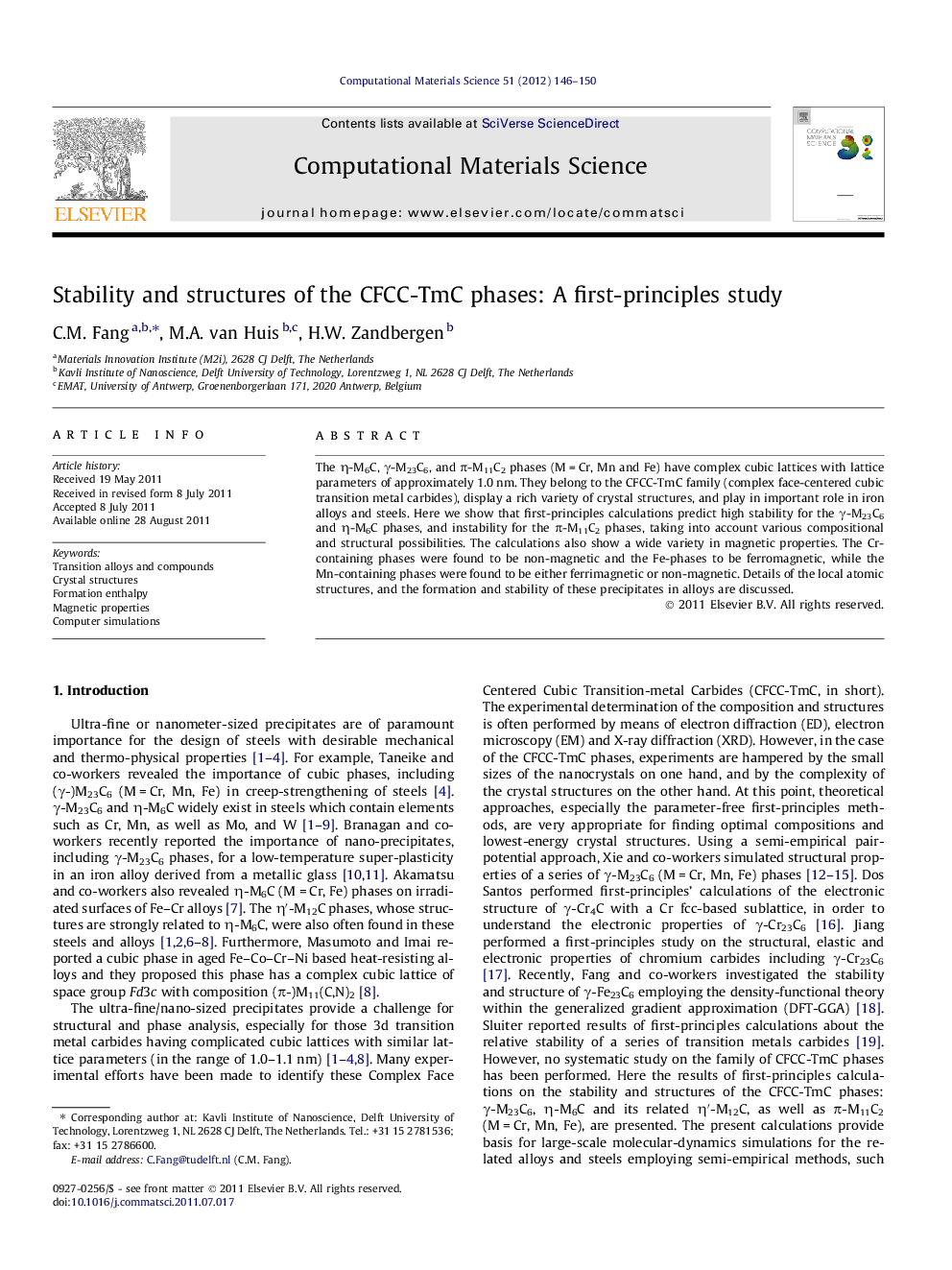| کد مقاله | کد نشریه | سال انتشار | مقاله انگلیسی | نسخه تمام متن |
|---|---|---|---|---|
| 1561821 | 999573 | 2012 | 5 صفحه PDF | دانلود رایگان |

The η-M6C, γ-M23C6, and π-M11C2 phases (M = Cr, Mn and Fe) have complex cubic lattices with lattice parameters of approximately 1.0 nm. They belong to the CFCC-TmC family (complex face-centered cubic transition metal carbides), display a rich variety of crystal structures, and play in important role in iron alloys and steels. Here we show that first-principles calculations predict high stability for the γ-M23C6 and η-M6C phases, and instability for the π-M11C2 phases, taking into account various compositional and structural possibilities. The calculations also show a wide variety in magnetic properties. The Cr-containing phases were found to be non-magnetic and the Fe-phases to be ferromagnetic, while the Mn-containing phases were found to be either ferrimagnetic or non-magnetic. Details of the local atomic structures, and the formation and stability of these precipitates in alloys are discussed.
Figure optionsDownload as PowerPoint slideHighlights
► The CFCC-TmC phases play an important role as precipitates in steels and iron alloys.
► They have rather complex cubic lattices with a large lattice parameter of about 1 nm.
► The γ-M23C6 and η-M6C phases have high stability, in agreement with experimental reports.
► The existence of the recently suggested π-M11C2 phase is unlikely, given its very high formation energy.
► The CFCC-TmC phases vary widely in magnetism: ferri-, ferro-, and non-magnetism were found.
Journal: Computational Materials Science - Volume 51, Issue 1, January 2012, Pages 146–150